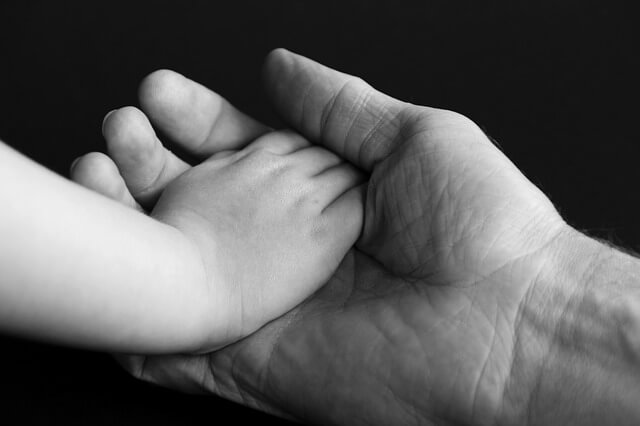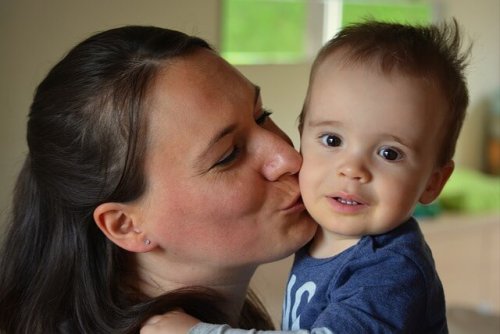Myths and Facts of Attachment Parenting

Attachment parenting is a philosophy that focuses on the love given to your baby during infancy. This love forms the base that allows them to reach full physical and emotional maturity in the future.
This theory explains that the support and love a child receives in the first few stages of life are going to facilitate their development.
When a young child perceives their parents’ affection and mutual attachment, they grow up as a secure person and totally emotionally independent.
On the other hand, a child who receives little love during childhood can experience growth and development regression.
Attachment parenting allows the child to establish good relationships with others and learn to make decisions alone. As an adult, this translates into being self-sufficient.
To clarify some of the doubts that you may have, we’ll discuss the benefits of attachment parenting below.

How to implement attachment parenting?
To raise your child with attachment parenting, the first rule is to give them a lot of love and to spend as much time with them as possible.
You will achieve:
- Loving them from the womb. The emotions that the mother and her child share during pregnancy form unbreakable bonds. By loving them, talking to them, and singing to them, even before birth, you are helping their development from the uterus.
- Giving them affection and stimuli during their first few weeks of life. This also helps the neural development of their brain and makes them happy.
- Giving them a safe home where you all live in harmony. A safe home doesn’t have violence and is not dangerous.
- Feeding them with breast milk whenever possible
- Satisfying their basic needs and teaching them to satisfy them on their own as they continue growing.
- Guaranteeing they are economically provided for
- Protecting them, watching over them, and taking care of them when they are sick or injured
What they don’t tell you about attachment parenting
Mom, you should know there are many myths about attachment parenting. There are as many supporters as there are opponents.
We will clarify three main points of attachment parenting below.
Number one: It is a myth that attachment parenting means poorly raising children.
A child is only brought up poorly based on the good or bad education they have. The love and support that they receive from their parents don’t play into it.
Number two: It is a myth that when a child is raised with attachment parenting they come between the romantic relationship of their parents and take time away from the couple.
We should clarify that a child has nothing to do with the love that two parents have for each other.
A couple that loves each other and is sexually attracted to each other will always find time to be together.
However, it is true that the baby’s arrival will make things more complicated. With the amount of time that the baby needs, the change in schedules and home routines, the lovers will have to be more creative to find time to be together.

This creativity can be a tool to finish your routine and maintain a loving relationship that is constantly being improved.
Number three: The third myth about attachment parenting is that if we want to employ this style of parenting, we should not let the baby cry.
To reveal the truth of the situation, we should tell you that crying is an innate behavior of your baby.
Babies cry whenever they want or need something: breast milk, a diaper change, love, to be carried, to sleep…
But attachment parenting doesn’t mean to go running every time your child opens their mouth and lets out the first cry.
Small children need the opportunity to learn that when crying, their needs will be satisfied. But they will not learn this if they are always glued to our hip.
You don’t have to let them cry a lot, but you also don’t have to immediately attend to them upon their first cry.
Mom, what they don’t tell you about attachment parenting is that it is as much sacrificing as it is fulfilling.
In the same way that natural birth is as amazing as it is painful.
All cited sources were thoroughly reviewed by our team to ensure their quality, reliability, currency, and validity. The bibliography of this article was considered reliable and of academic or scientific accuracy.
- Barudy, J., & Dantagnan, M. (2005). Los buenos tratos a la infancia: Parentalidad, apego y resiliencia. Editorial Gedisa.
- Garrido-Rojas, L. (2006). Apego, emoción y regulación emocional. Implicaciones para la salud. Revista latinoamericana de psicología, 38(3), 493-507. https://www.redalyc.org/pdf/805/80538304.pdf
- Marrone, M., Diamond, N., Juri, L., & Bleichmar, H. (2001). La teoría del apego: un enfoque actual. Madrid: Psimática.
- Mosquera D, Gonzalez, A (2009) Escala de Apego y Patrones Relacionales.
- Mosquera, D., & González, A. (2013). Del apego temprano a los síntomas del trastorno límite de personalidad. Revista Digital de Medicina Psicosomática y Psicoterapia, 3(3), 1-33. http://www.psicociencias.com/pdf_noticias/Apego_y_TLP.pdf
- Shaffer, D. R., & del Barrio Martínez, C. (2002). Desarrollo social y de la personalidad. Madrid: Thomson.
